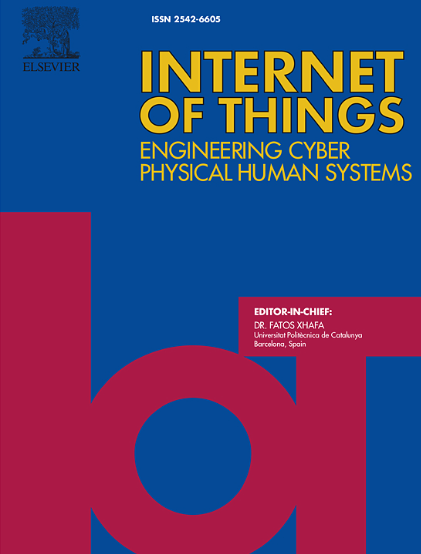Intelligent multi-sensor fusion and anomaly detection in vehicles via deep learning
IF 6
3区 计算机科学
Q1 COMPUTER SCIENCE, INFORMATION SYSTEMS
引用次数: 0
Abstract
Deep learning techniques are predominantly used to identify vehicular events such as harsh cornering, harsh braking, and rapid acceleration by analyzing signal data. However, deploying deep learning models demands high-quality, large-scale data, and the processes of data acquisition, labeling, extraction, and processing are often overlooked in the literature. In this article, we focus on detailed dataset creation, including labeling and feature analysis, alongside the development of AI models. Real-time data collection is conducted on experimental roads using numerous vehicles equipped with AI-enabled edge units. The raw data collected, however, is unsuitable for training deep learning models due to redundant features, noisy attributes, and a lack of labeled anomalous events. To address this, we employ multiple preprocessing and postprocessing techniques to generate high-quality datasets, analyzing the specific impacts of each signal feature on anomalous events. Since real-time collected data lacks labels, a thorough labeling process is required for each data point. An autoencoder-based labeling process is applied to the final dataset, where the autoencoder detects and labels anomalous behaviors based on data timestamps. Following the labeling, a hybrid deep learning model incorporating Convolutional Neural Networks (CNN), Long Short Term Memory (LSTM), attention, and Fully Connected Neural Networks (FCDNN) layers is trained and tested for detecting anomalous driving events. The results demonstrate that the proposed method outperforms the state-of-the-art solutions by reaching high accuracy rates: 99.69% for harsh cornering events and 98.24% for rapid acceleration and harsh braking events, with corresponding F1 scores of 90.14% and 81.22%, respectively.
基于深度学习的智能多传感器融合与车辆异常检测
深度学习技术主要用于通过分析信号数据来识别车辆事件,如急转弯、急刹车和快速加速。然而,部署深度学习模型需要高质量、大规模的数据,而数据采集、标记、提取和处理的过程在文献中经常被忽视。在本文中,我们专注于详细的数据集创建,包括标记和特征分析,以及人工智能模型的开发。在实验道路上,使用配备人工智能边缘单元的众多车辆进行实时数据收集。然而,由于冗余特征、噪声属性和缺乏标记的异常事件,收集的原始数据不适合训练深度学习模型。为了解决这个问题,我们采用多种预处理和后处理技术来生成高质量的数据集,分析每个信号特征对异常事件的具体影响。由于实时采集的数据缺乏标签,因此需要对每个数据点进行彻底的标签处理。基于自动编码器的标记过程应用于最终数据集,其中自动编码器根据数据时间戳检测和标记异常行为。在标记之后,结合卷积神经网络(CNN),长短期记忆(LSTM),注意力和全连接神经网络(FCDNN)层的混合深度学习模型进行训练和测试,以检测异常驾驶事件。结果表明,该方法在急转弯事件和急刹车事件上的准确率分别达到99.69%和98.24%,F1得分分别为90.14%和81.22%,优于目前最先进的解决方案。
本文章由计算机程序翻译,如有差异,请以英文原文为准。
求助全文
约1分钟内获得全文
求助全文
来源期刊

Internet of Things
Multiple-
CiteScore
3.60
自引率
5.10%
发文量
115
审稿时长
37 days
期刊介绍:
Internet of Things; Engineering Cyber Physical Human Systems is a comprehensive journal encouraging cross collaboration between researchers, engineers and practitioners in the field of IoT & Cyber Physical Human Systems. The journal offers a unique platform to exchange scientific information on the entire breadth of technology, science, and societal applications of the IoT.
The journal will place a high priority on timely publication, and provide a home for high quality.
Furthermore, IOT is interested in publishing topical Special Issues on any aspect of IOT.
 求助内容:
求助内容: 应助结果提醒方式:
应助结果提醒方式:


